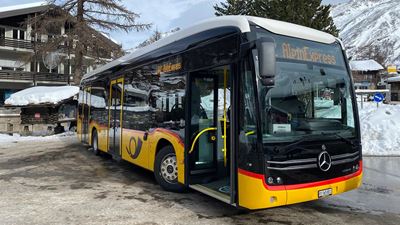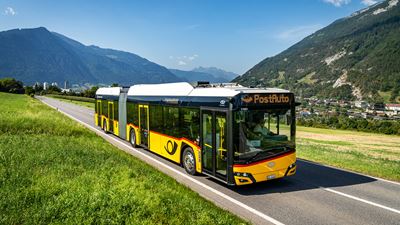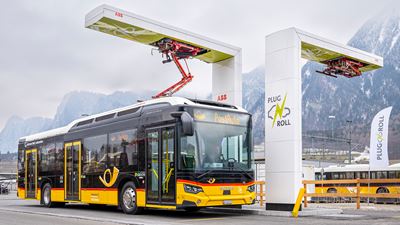Press releases
A fuel cell Postbus is on the roads once again in Brugg
After a seven-year break, a hydrogen bus is now running again on Postbus routes in the Brugg region. The vehicle is part of the drive to implement PostBus’s climate strategy. The company is looking to gather operational and economic experience.
Rich Content Section
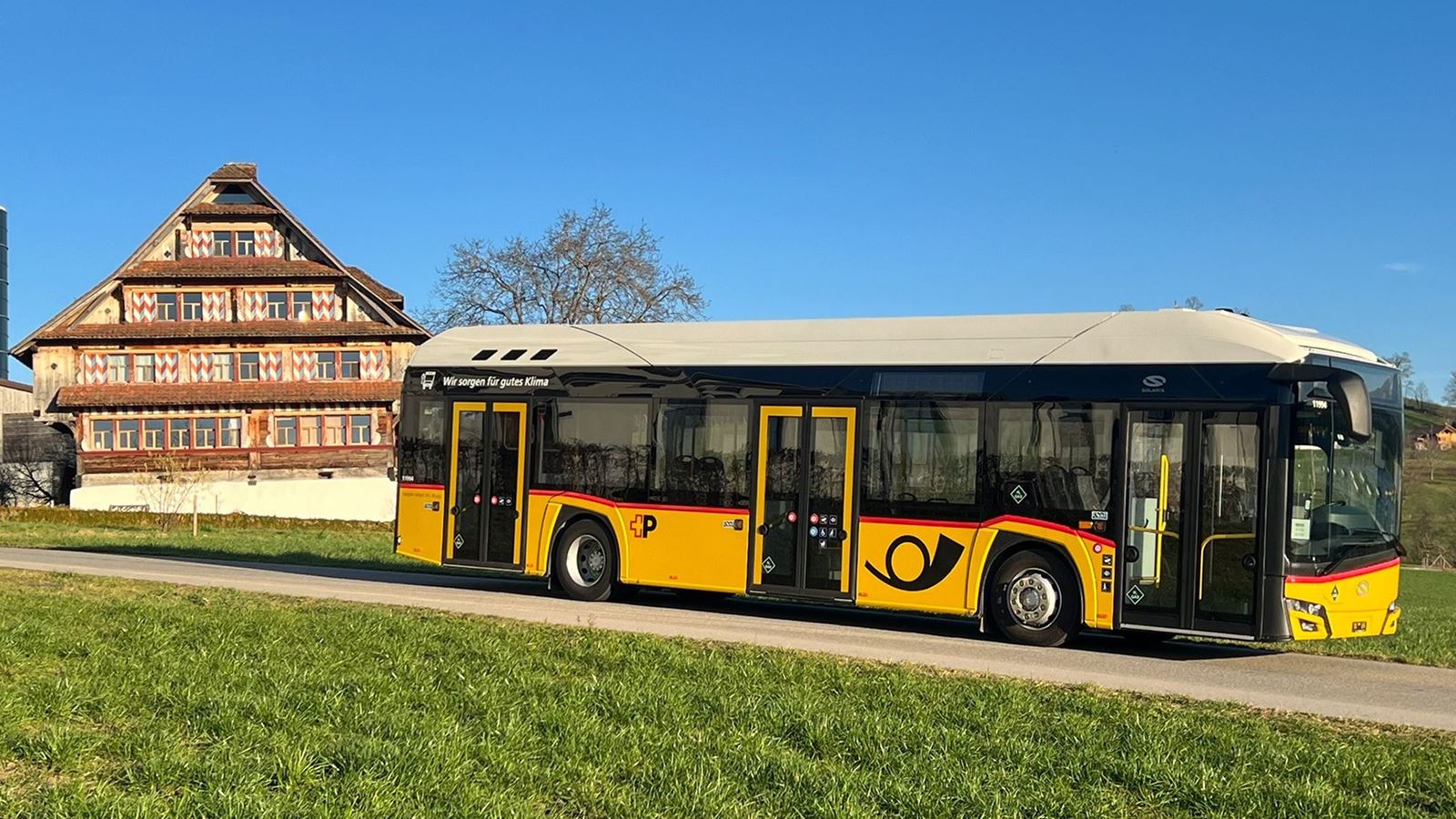
Since 1 March 2024, a hydrogen-powered fuel cell Postbus has been running on PostBus routes in the Brugg region. The Postbus uses the fuel cell to convert hydrogen into electrical power. Once the vehicle is on the road, it emits water vapour from the rear. However, this vapour is odourless and completely free of pollutants.
Standard bus with the usual features
The new vehicle is a 12-metre-long standard bus made by vehicle manufacturer Solaris. It has three doors, low-floor access and the usual features. Just like pure battery-powered buses, it also avoids the jolts caused by gear changes on a diesel bus, which means that journeys are much more comfortable for passengers. The Postbus is also very quiet on the roads – a bonus for residents along the Postbus routes. The fuel cells are installed at the rear of the Postbus, and the hydrogen tanks are located on the roof. The new Postbus is a rental vehicle that is part of the fleet run by PostBus operator Voegtlin-Meyer. Currently, it is the only hydrogen vehicle in the PostBus fleet.
Ample experience with fuel cell Postbuses
Between December 2011 and early 2017, PostBus tested five fuel cell Postbuses in Brugg, performing pioneering work in the field of public transport. At the time, the project was funded by the Canton of Aargau, the Confederation and the EU and was slated to run for five years. For economic and technical reasons, PostBus decided not to extend the project beyond its official term. Now, in collaboration with the Canton of Aargau, PostBus is once again putting a hydrogen bus on the roads.
To reach Swiss Post’s climate goals, PostBus is gradually converting its fleet of around 2,300 vehicles to alternative drive systems. For economic reasons, more cost-effective battery-powered buses are usually used, but PostBus remains open to alternative fossil-free technologies. On the Brugg side of the station, it is not currently possible to install charging points to “top up” battery-powered buses. However, in order to cover longer distances with eco-friendly drive systems, a fuel cell Postbus is now being brought into operation.
Answers to economic questions
At present, the variety of fuel cell buses available is not as large as the variety of battery-powered buses. Moreover, the vehicles are more expensive to procure than battery-powered and diesel buses. For this reason, PostBus is also introducing the fuel cell bus in order to find out how much it costs to operate in comparison with battery-powered and diesel buses. If the results are positive, more fuel cell buses may be added to the fleet in Brugg over the coming years, and it may be possible to switch the site entirely to alternative drive systems in the space of just a few years.
At its public filling station “Brugg Cholehof”, PostBus operator Voegtlin-Meyer also plans to supply locally produced hydrogen in future. A production facility at the Wildegg-Brugg run-of-the-river power station is also planned. If hydrogen is produced in the immediate vicinity of the petrol station, this may have a positive effect on its price, and, in turn, on the operation of fuel cell buses. The facility is currently still in the planning phase. The introduction of the new vehicle and the construction of the hydrogen production facility are taking place at different times due to the complexity of the project. The PostBus operator currently sources its hydrogen for the fuel cell Postbus from Lenzburg.
Rich Content Section
Partner
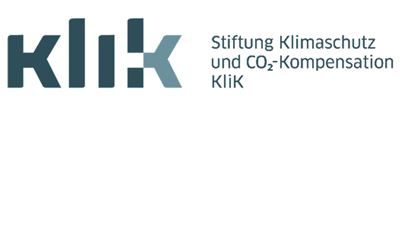
The hydrogen Postbus is supported financially by the KliK Foundation’s “H2 buses” programmeTarget not accessible. The programme promotes the use of buses that run on green hydrogen (H2) in public transport and travel.
